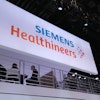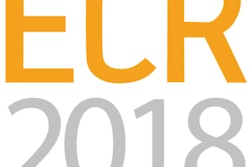SEATTLE - Researchers at last week's American Academy of Neurology (AAN) conference suggested that MRI and PET may be able to help physicians distinguish between dementia patients with Alzheimer's disease and those with Lewy body dementia.
Lead author Dr. Kejal Kantarci, assistant professor of radiology at the Mayo Clinic in Rochester, MN, and colleagues studied 13 clinically diagnosed Alzheimer's disease patients and five patients diagnosed with Lewy body dementia. They compared these mild to moderately impaired individuals with 20 cognitively normal individuals.
The aim of the study was to determine if imaging could differentiate between dementia types early in the disease process. "The two most common neurodegenerative disorders associated with dementia in the elderly are Alzheimer's disease and dementia with Lewy bodies," Kantarci said at a poster presentation during the AAN conference. "Specific imaging markers for differential diagnosis of each condition would be useful."
The researchers used carbon-11-labeled Pittsburgh Compound B (PiB) with PET as a surrogate marker for amyloid pathology and hippocampal volume as imaged with MRI as a marker of Alzheimer's pathology.
"We were able to see that MRI and PiB-PET are complementary in distinguishing patients with dementia with Lewy bodies and Alzheimer's disease," Kantarci said. "A majority of dementia with Lewy bodies patients had PiB retention and/or hippocampal atrophy, in agreement with pathological studies showing that patients with clinically diagnosed dementia with Lewy bodies may often have some degree of additional Alzheimer's disease pathology."
The MRI studies were performed using a 3-tesla scanner with a 3D magnetization-prepared rapid acquisition gradient-echo (MP-RAGE) sequence developed for the Alzheimer's Disease Neuroimaging Initiative study. Production of PiB and radiolabeling was performed as outlined by Mathis et al.
Kantarci found that hippocampal W-scores were slightly reduced among patients diagnosed with Lewy body dementia (-0.7 compared to 0.1 for normals) and was markedly reduced (-2.6) for patients with Alzheimer's disease.
Global cortical PiB was 1.3 among the control group, 1.6 or slightly elevated in the Lewy body dementia patients, and 2.2 among the Alzheimer's patients.
"Our hope would be that if we can replicate these pilot study results in a larger trial it might help in determining therapy for these patients," Kantarci said.
By Edward Susman
AuntMinnie.com contributing writer
May 4, 2009
Related Reading
Brain scans spot changes linked to Alzheimer's, March 17, 2009
MRI shows brain atrophy to predict Alzheimer's, February 11, 2009
UCLA study finds PET with FDDNP radiotracer can predict Alzheimer's, January 13, 2009
PET, PiB support cognitive reserve hypothesis in Alzheimer's, November 14, 2008
MRIs show promise for early Alzheimer's diagnosis, July 28, 2008
Copyright © 2009 AuntMinnie.com




















